Ascending Power: The Evolution of Military Aviation from the Wright Brothers to Sixth-Generation Fighters.
The Evolution of Military Aviation.
The Evolution of Military Aviation has undergone a breathtaking transformation since its inception. What began as fragile biplanes struggling to stay airborne is now an arena dominated by supersonic stealth fighters, unmanned aerial vehicles (UAVs), and cutting-edge concepts like the “loyal wingman.” This journey from rudimentary beginnings to the 5th and 6th generation of aircraft reflects an incredible synthesis of technological ingenuity and military necessity.
Let’s explore how military aviation evolved, why it advanced so rapidly, and where the future is headed.
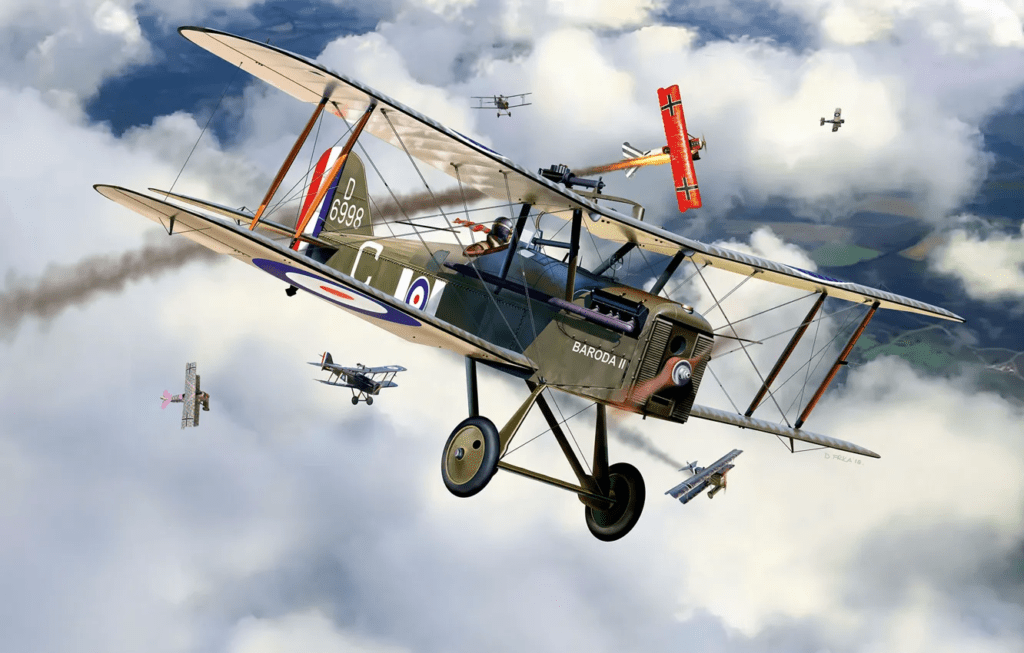
The Early Days: Biplanes and Skepticism
When the Wright brothers achieved powered flight in 1903, few saw its military potential. However, by the time World War I broke out in 1914, it became evident that aviation offered a strategic edge.
Early military aircraft like the Sopwith Camel, Fokker Eindecker, and SPAD XIII were primarily used for reconnaissance, as their slow speeds and limited weaponry made them unsuitable for significant offensive roles. It wasn’t long, however, before aircraft were armed with machine guns and bombs, evolving into tools for air superiority and ground support.
By the end of World War I, the concept of dogfighting had emerged, and military commanders began to recognize the strategic importance of controlling the skies. This shift in perspective laid the foundation for military aviation’s rapid advancement.

Between the Wars: Experimentation and Expansion
The evolution of military aviation exploded in the interwar years (1918–1939) were a period of innovation. Nations developed more powerful engines, experimented with all-metal airframes, and introduced variable-pitch propellers. Aircraft like the Hawker Hurricane and Mitsubishi Zero showcased advancements in speed, maneuverability, and range.
Significantly, this era saw the birth of strategic bombing theories, with figures like Giulio Douhet advocating for airpower as a decisive factor in warfare. While these theories were controversial, they would heavily influence World War II military aviation.
World War II: Military Aviation Comes of Age
World War II (1939–1945) was a huge evolution of military aviation and a real turning point for military aviation. Aircraft became faster, more powerful, and more versatile. The war introduced innovations that defined modern air combat:
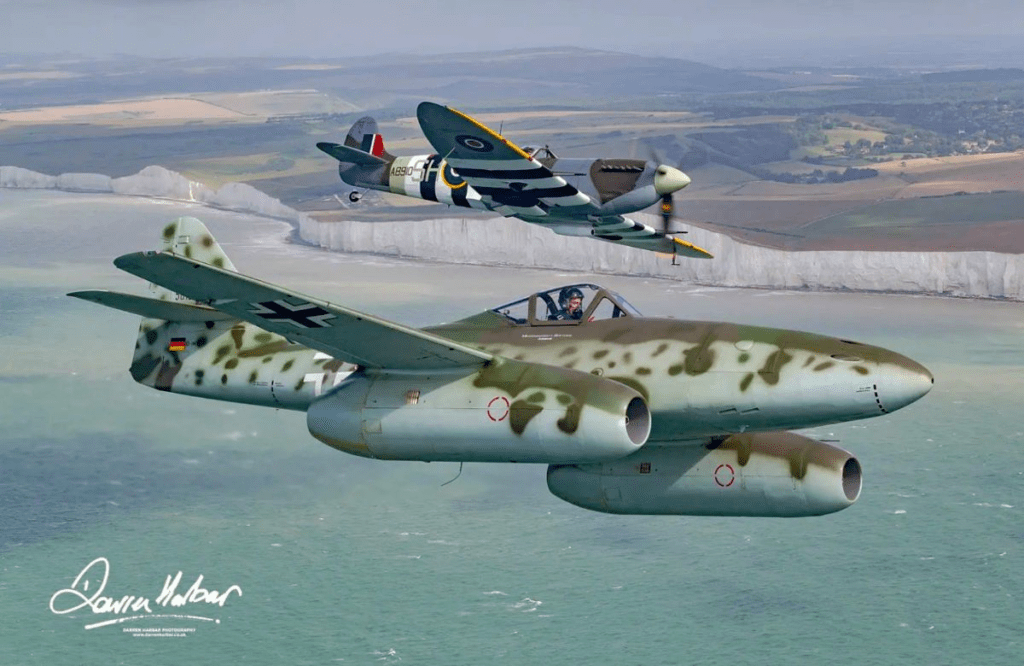
- Fighters and Bombers: Planes like the P-51 Mustang, Messerschmitt Bf 109, and Boeing B-17 Flying Fortress pushed the limits of performance, range, and payload capacity.
- Jet Propulsion: The Messerschmitt Me 262 became the world’s first operational jet-powered fighter, signaling the dawn of the jet age.
- Aircraft Carriers: Naval aviation expanded dramatically, with aircraft carriers replacing battleships as the dominant force at sea.
- Radars and Navigation: Radar technology improved air defense and targeting, allowing for greater precision in both offensive and defensive missions.
By the end of the war, airpower was firmly established as a decisive element in military strategy.
- Joystick / HOTAS – AMAZON.com
- Rudder Pedals – AMAZON.com
- Throttle Quadrant – AMAZON.com
- Gaming Chair – AMAZON.com
- VR Headset – AMAZON.com
The Jet Age and Cold War Era: Supersonic Speed and Strategic Deterrence
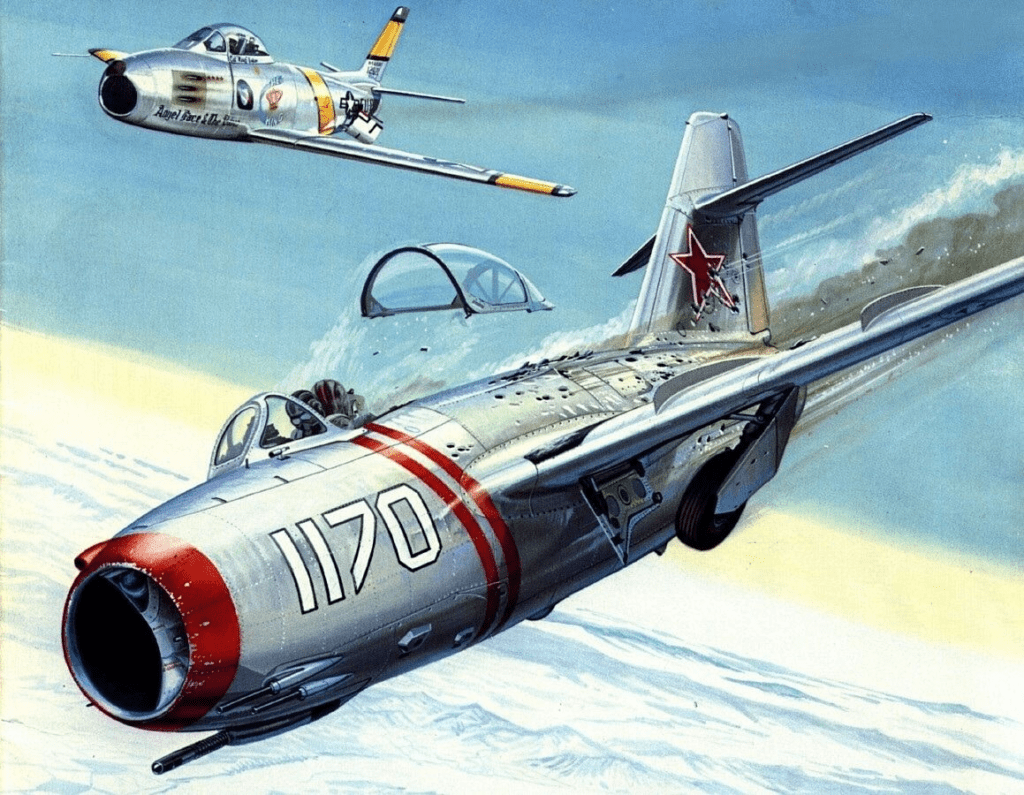
The Cold War (1947–1991) drove unprecedented advances in military aviation with the evolution of military aviation in both the United States and Soviet Union exploded while competing for aerial dominance. Key developments included:
- Supersonic Flight: Aircraft like the F-86 Sabre and MiG-15 marked the transition to supersonic speeds, enabling more effective air combat and interception.
- Strategic Bombers: Heavy bombers like the B-52 Stratofortress and the Soviet Tu-95 were designed to carry nuclear weapons, emphasizing the role of aviation in strategic deterrence.
- Air Superiority Fighters: Aircraft such as the F-4 Phantom and MiG-21 were engineered to dominate the skies, combining speed, agility, and advanced weaponry.
- Stealth Technology: The F-117 Nighthawk introduced radar-evading designs, changing the game for air combat and strike missions.
During this period, aerial refueling, electronic warfare, and integrated air defense systems became integral components of military aviation.
Fifth-Generation Fighters: The Rise of Stealth and Networking
The advent of fifth-generation fighters in the late 20th and early 21st centuries marked a significant leap forward. These aircraft represent the pinnacle of current military aviation, characterized by:

- Stealth Technology: Low-observable designs like the F-22 Raptor and F-35 Lightning II allow these aircraft to evade radar detection.
- Sensor Fusion: Advanced avionics systems integrate data from multiple sources, giving pilots unparalleled situational awareness.
- Network-Centric Warfare: Fifth-generation aircraft are designed to operate as part of a broader network, sharing information with other platforms to create a unified battlespace picture.
- Multirole Capabilities: These aircraft can perform a wide range of missions, from air superiority to ground attack, without compromising performance.

The F-22, introduced in 2005, set the standard for fifth-generation fighters, with its unmatched agility, stealth, and integrated systems. The F-35 expanded on this by offering a more affordable, versatile platform for allied nations.
Sixth-Generation Fighters: The Future of Military Aviation
While fifth-generation fighters are the most advanced operational aircraft today, sixth-generation designs are already in development. These future platforms are expected to include:
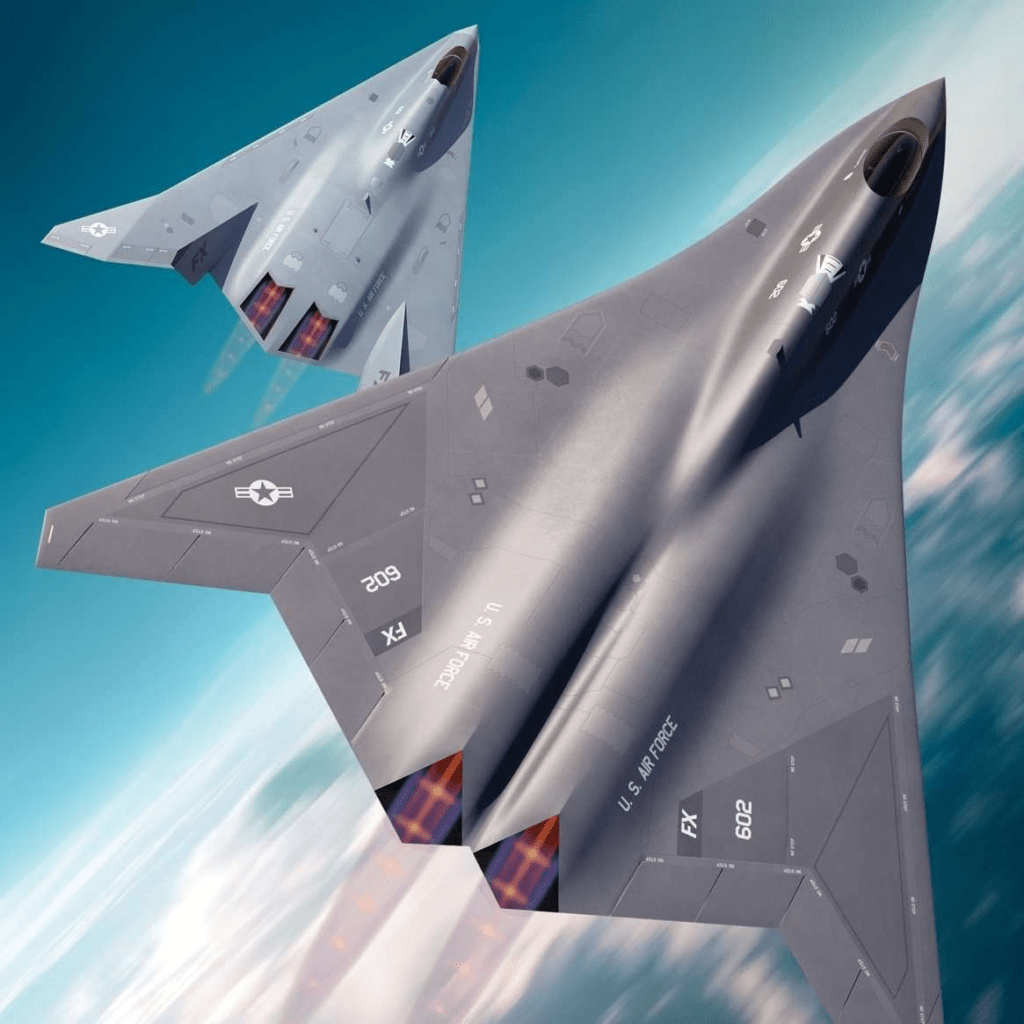
- Artificial Intelligence (AI): AI co-pilots could assist human pilots in decision-making or even operate the aircraft autonomously.
- Directed Energy Weapons: Lasers and other energy-based systems may offer new options for air-to-air and air-to-ground engagements.
- Adaptive Engines: Variable-cycle engines will improve fuel efficiency and performance across a broader range of speeds and altitudes.
- Loyal Wingman Concepts: Sixth-generation fighters will likely operate alongside unmanned aerial systems (UAS) that act as “loyal wingmen,” providing additional firepower and reconnaissance capabilities.
- Enhanced Survivability: Advanced stealth materials and electronic warfare systems will make these aircraft even harder to detect and target.
Programs like the U.S. Air Force’s Next Generation Air Dominance (NGAD) and the UK-led Tempest initiative are at the forefront of this effort, aiming to deliver operational sixth-generation fighters by the 2030s.
The Rise of Drones and Unmanned Aerial Systems

Parallel to the development of manned aircraft, drones have become a cornerstone of modern military aviation. Initially used for reconnaissance, UAVs now perform a wide array of missions, including:
- Strike Missions: Armed drones like the MQ-9 Reaper deliver precision strikes against high-value targets while keeping operators out of harm’s way.
- Surveillance and Reconnaissance: Platforms like the RQ-4 Global Hawk provide real-time intelligence over vast areas.
- Electronic Warfare: UAVs equipped with electronic warfare systems can disrupt enemy communications and radar.
The concept of the “loyal wingman” takes UAV integration to the next level. These autonomous or semi-autonomous drones work in tandem with manned aircraft, carrying out tasks such as target designation, electronic jamming, and even direct combat. Programs like Boeing’s Airpower Teaming System and Kratos’ XQ-58 Valkyrie are pioneering this approach.
Technological Drivers of Rapid Advancement

The rapid progression of military aviation can be attributed to several factors:
- Military Necessity: Wars and conflicts have consistently driven innovation, as nations seek to outmatch their adversaries.
- Industrial Investment: The aerospace industry has heavily invested in research and development, spurred by government funding.
- Advancements in Materials Science: Lightweight, durable materials like carbon composites have improved aircraft performance.
- Digital Technology: Modern avionics, artificial intelligence, and networking capabilities are rooted in advances in computing and software.
- Global Competition: Geopolitical rivalries have pushed nations to prioritize aerial dominance.

- Latest CPU’s Available Now – Amazon.com
- Get a NEW GPU Best Performance – AMAZON.com
- Upgrade RAM Here today – AMAZON.com
- Prebuilt PC Options – AMAZON.com
The Impact of Military Aviation on Society
The benefits of military aviation extend beyond the battlefield:
- Technological Spillover: Many innovations, from jet engines to GPS, have civilian applications.
- Global Security: Airpower provides strategic deterrence, contributing to global stability.
- Economic Growth: Military aviation drives job creation and technological leadership in the aerospace industry.

Conclusion: The Endless Ascent
From the Wright brothers’ fragile biplane to the powerful, networked 5th and 6th-generation fighters of today, military aviation has undergone a breathtaking evolution. This relentless ascent reflects humanity’s drive to innovate, adapt, and achieve mastery of the skies.
As drones, artificial intelligence, and advanced weaponry redefine the future, military aviation will remain a critical element of global security. Yet, at its core, the story of military aviation is one of human ingenuity—a testament to how far we can ascend when necessity, ambition, and technology align.
Author

Brendon McAliece (Aka Gunnie) is a military veteran with 23 years working on Jet Fighters, their weapons systems and ejection seat/module systems as well as munitions and R&D. Involved with flight simulation since the 1980s, he has flown all the major flight simulators over the years.
He is an Australian expat who has lived in Malaysia, UK, Saudi Arabia and more recently Thailand. He is a multi-lingual blogger who loves to share his life experiences here on LetsFlyVFR.com and DreamingGuitar.com, with his lifestyle and Travel experiences Blog plus his Dreaming Coffee website.
Learn More @ DreamingGuitar.com – DreamingCoffee.com – LetsFlyVFR.com
( HOME – BLOG – SHOP – ABOUT )
As an Amazon affiliate I may benefit from qualifying sales.
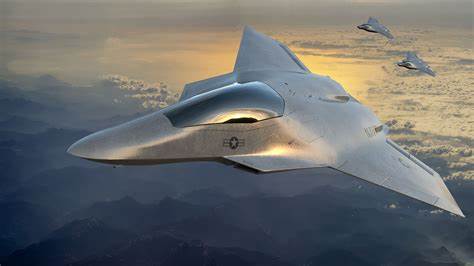
One response to “Ascending Power: The Evolution of Military Aviation from the Wright Brothers to Sixth-Generation Fighters.”